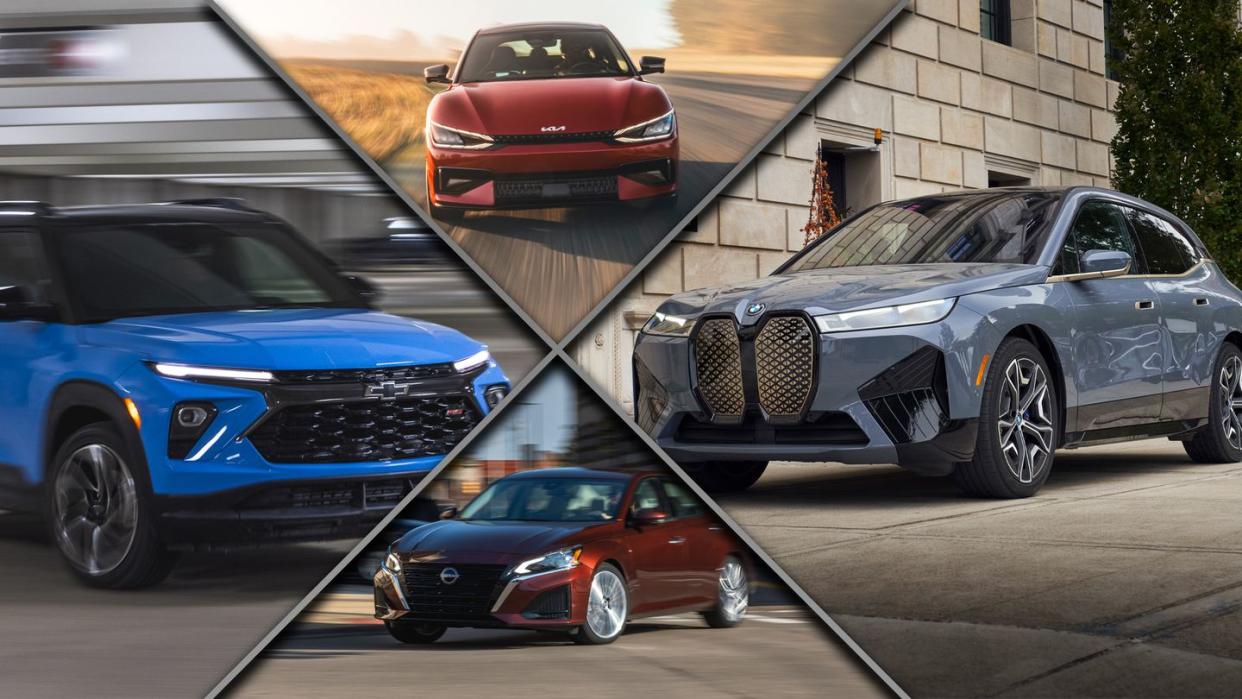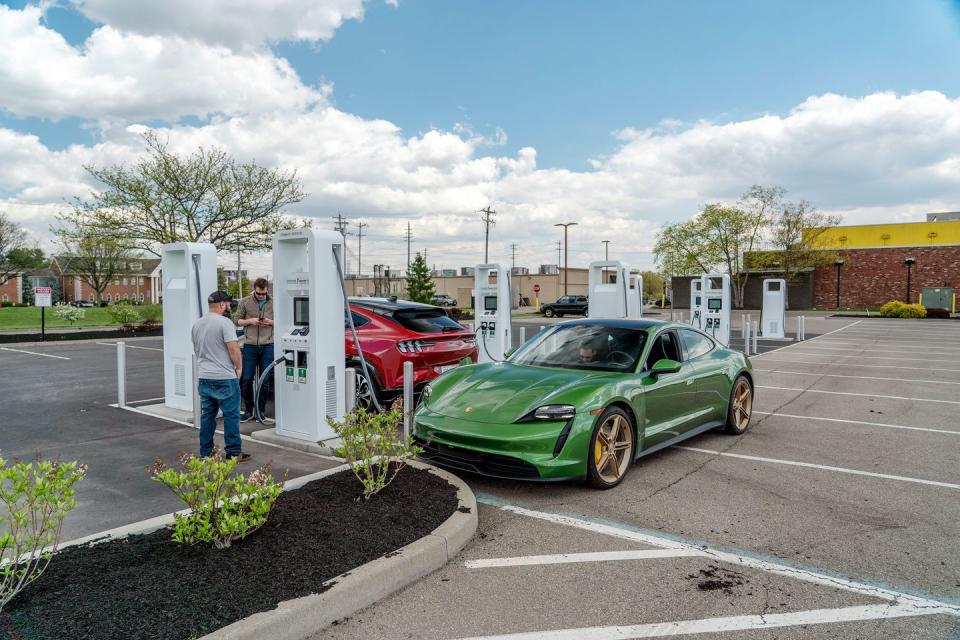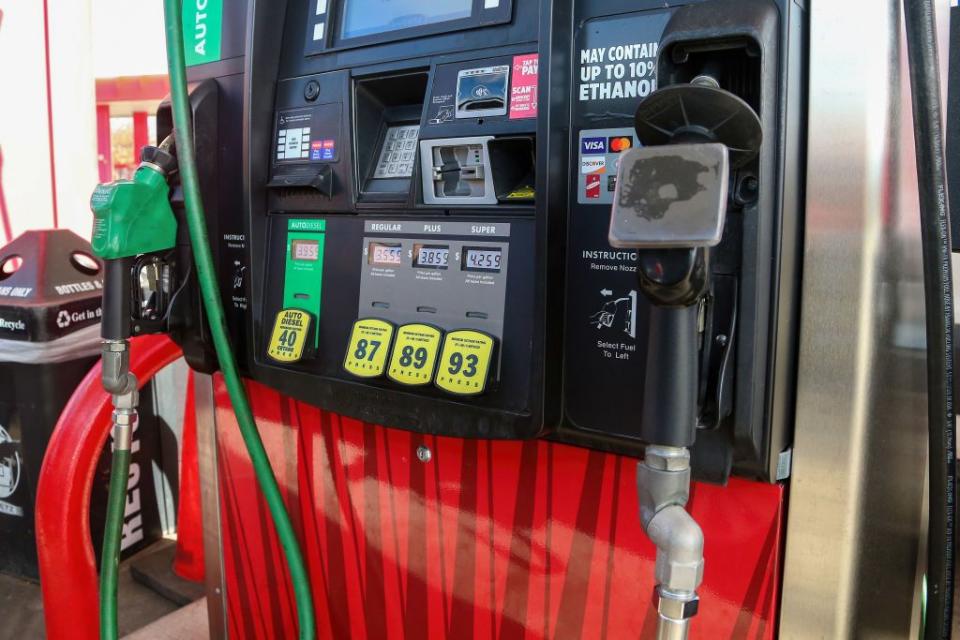Gas vs. Electric Cars: Pros and Cons of Each

With EVs quickly spreading across the automotive landscape, your electric propulsion choices are no longer limited to small, efficiency-minded cars or Teslas. All-electric options now include a variety of trucks, crossovers, and SUVs, as well as sporty and luxurious models. With this expanded selection and the help of government incentives, EVs look more attractive to more buyers. But important differences remain between electrics and their internal-combustion counterparts.
Advantages of an Electric Vehicle
EVs have a battery that feeds at least one electric motor that sends torque to the wheels. Like the gas tank on an internal-combustion car, the battery pack limits how far an EV can travel in one go. Available range varies as much as the sizes and shapes these cars come in, from 160 miles in a Nissan Leaf Plus to 410 miles with the Lucid Air Grand Touring, the current leader in our 75-mph highway range test.
How and where you use an electric car determines the kind of range you’ll need, but regardless, range anxiety can sometimes be a thing because you’ll need to recharge at some point. For a lot of folks, charging at home overnight is sufficient, but those who travel long distances with some frequency may still prefer the flexibility of something with an engine, be it a straight internal-combustion machine or a hybrid or plug-in hybrid.
An EV can allow you to break your dependence on petroleum to power your car, but this depends on the source of the electricity you feed it. If sustainability is important to you, check with your power utility on the mix of fuel sources they use to produce electricity; there are those who go so far as installing solar panels to provide their own artisanal roof-to-charger energy.

There are practical advantages to EVs too. The instant torque of electric motors makes even the cheapest EVs feel sprightly, and their operation is silent and vibration-free. Nearly all operate using direct drive, which means they don't have a geared transmission that can fail. There are no oil changes, and the strong regenerative braking system means the traditional brakes may never need service in a typical ownership period. Keep the tires aired up, rotate them on schedule, swap in a new cabin air filter every so often, and keep an eye on the washer fluid and wiper blades, and that's about it.
Advantages of a Gas-Fueled Car
The majority of new cars and trucks sold still have an internal-combustion engine, fueled by either gasoline or diesel. That engine combusts dino juice and translates lots of tiny explosions into rotational forces that are passed to a transmission and then on to the wheels to make the car move. Archaic, maybe, but it’s tried and true, and automakers continue to make this process more efficient.
These vehicles can generally travel farther than EVs and don’t have the same limited refueling infrastructure. There are simply a lot more gas stations than there are charging points—if you can’t find a gas station, chances are you won’t find a place to plug in nearby either.

Gas cars also refuel more quickly than even the fastest-charging EVs, reducing downtime and overall trip length on longer journeys. Fixing a gas car tends to be less expensive as well, despite the greater number of moving parts, because an EV’s battery pack makes up a large part of its cost and, again, we’ve been dealing with internal-combustion vehicles for much longer. That said, new-EV high-voltage battery packs are covered for at least 8 years or 100,000 miles, with some makers stretching that to 10 years and more miles. The issue of replacement cost mainly applies to older out-of-warranty EVs.
Deciding between Gas and Electric
As we’ve discussed, range and the ease of refueling away from home is the main differentiator between gas-fed cars and EVs. Because of this, making the transition to all-electric motoring can be intimidating, but with a little preparation and planning it’s definitely doable for many buyers. If you live in a two-car household, one way to help ease into EVs is to replace just one gas vehicle for now, allowing you to keep the gas-powered one for long trips and use the electric car around town. As battery and charging technologies improve over time, this limitation will become less and less important.
You Might Also Like

